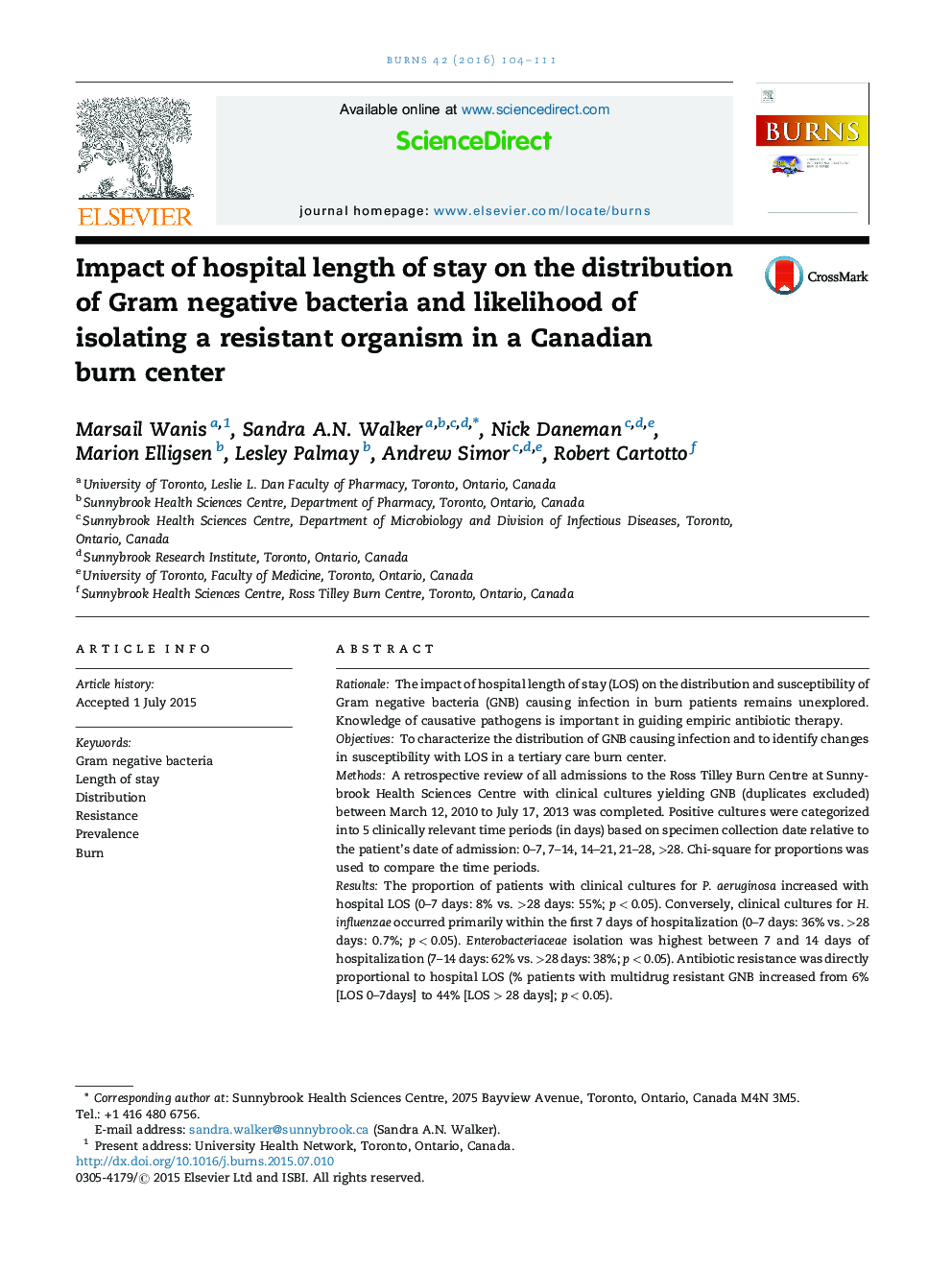| کد مقاله | کد نشریه | سال انتشار | مقاله انگلیسی | نسخه تمام متن |
|---|---|---|---|---|
| 3104178 | 1191644 | 2016 | 8 صفحه PDF | دانلود رایگان |
• Impact of length of stay on distribution of Gram negative bacteria in burn patients.
• Impact of length of stay on resistance patterns of Gram negative bacteria in burn patients.
• Study provides objective data documenting changes in species and resistance with burn center length of stay.
• Findings may support delaying the use of broad spectrum antibiotics in hemodynamically stable burn patients.
RationaleThe impact of hospital length of stay (LOS) on the distribution and susceptibility of Gram negative bacteria (GNB) causing infection in burn patients remains unexplored. Knowledge of causative pathogens is important in guiding empiric antibiotic therapy.ObjectivesTo characterize the distribution of GNB causing infection and to identify changes in susceptibility with LOS in a tertiary care burn center.MethodsA retrospective review of all admissions to the Ross Tilley Burn Centre at Sunnybrook Health Sciences Centre with clinical cultures yielding GNB (duplicates excluded) between March 12, 2010 to July 17, 2013 was completed. Positive cultures were categorized into 5 clinically relevant time periods (in days) based on specimen collection date relative to the patient's date of admission: 0–7, 7–14, 14–21, 21–28, >28. Chi-square for proportions was used to compare the time periods.ResultsThe proportion of patients with clinical cultures for P. aeruginosa increased with hospital LOS (0–7 days: 8% vs. >28 days: 55%; p < 0.05). Conversely, clinical cultures for H. influenzae occurred primarily within the first 7 days of hospitalization (0–7 days: 36% vs. >28 days: 0.7%; p < 0.05). Enterobacteriaceae isolation was highest between 7 and 14 days of hospitalization (7–14 days: 62% vs. >28 days: 38%; p < 0.05). Antibiotic resistance was directly proportional to hospital LOS (% patients with multidrug resistant GNB increased from 6% [LOS 0–7days] to 44% [LOS > 28 days]; p < 0.05).ConclusionsThis study provides objective data documenting changes in species and resistance patterns of GNB causing infection in patients admitted to a burn center as a function of hospital LOS; which may support delaying the use of broad spectrum antibiotics (e.g. carbapenems and beta-lactam/beta-lactamase inhibitors) in clinically stable patients.
Journal: Burns - Volume 42, Issue 1, February 2016, Pages 104–111
